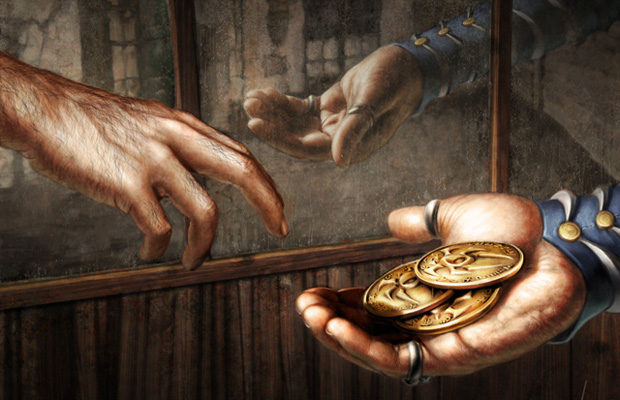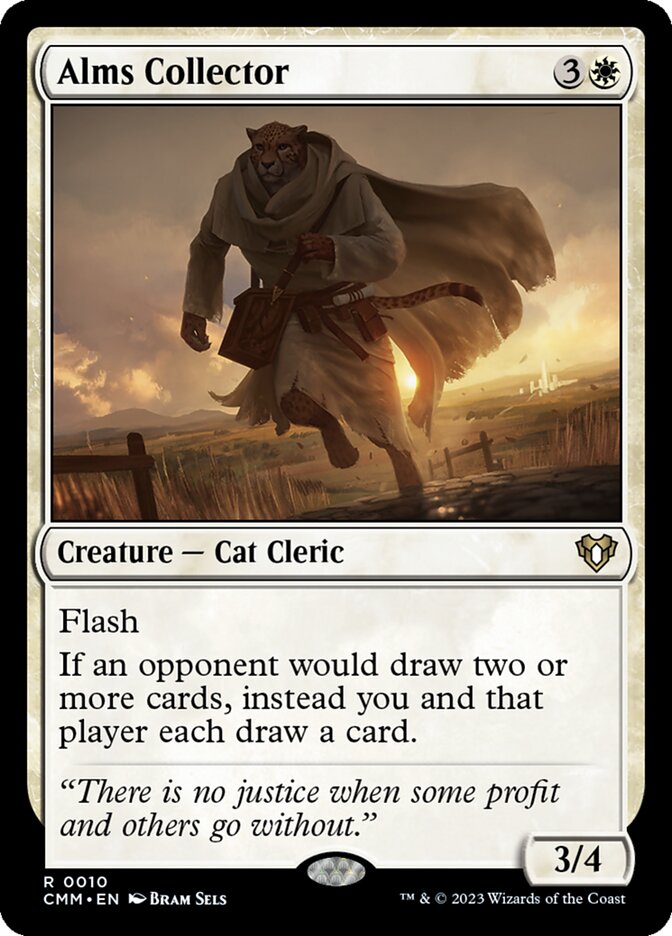Are you a Quiet Speculation member?
If not, now is a perfect time to join up! Our powerful tools, breaking-news analysis, and exclusive Discord channel will make sure you stay up to date and ahead of the curve.
When it comes to investing and business, there is a significant advantage to having access to more capital, but the downside is that taking on partners lessens one's direct control over the decision-making process. Two is always better than one, except when it isn't.
Partnering up with a friend or like-minded individual to essentially double your trade stock is often a smart move, but be wary of the side-effects. Today I'm going to discuss my experiences with shared collections and outline some of the strategies that have worked, or haven't worked, for me in the past.
Why Would You Share a Collection?
The obvious reason is to have access to a much larger pool of cards to trade from. When our powers combine, we've got more powers!
I've found sharing a collection to be an extremely effective way to make more trades and to more quickly grow a collection into more and better cards. I also think this is a particularly useful strategy for new players who are starting with an overall smaller pools of cards.
In addition, I've found this strategy particularly fruitful for acquiring Standard cards and being able to play the format with a little bit more ease.
Why You Might Choose Not to Share a Collection
The biggest downside of sharing a collection is that you don't have complete control over every single microtransaction as you would if it were just your cards. Trust is a big issue as well. Basically, if you don't trust a person 100 percent to be your teammate and partner, you can't team up!
A lot of finance people simply have enough cards that sharing a collection just isn't necessary. However, I would argue that if those individuals could share a collection with a trustworthy partner, there is a lot of value to be had by simply pooling resources.
How I've Shared – and Why It Was Great
Let's talk for a minute about the method I've used in the past to share a collection. First of all, the person I was sharing with was a good friend that I trusted. Not only did I trust him to not steal from me, but I also trusted him to make smart trades with our cards.
We both had fairly nice collections and would play in a lot of the same local tournaments. We also both liked to trade a lot. So in between rounds, we'd often be jamming trades at the same table and hanging out. One thing that happened a lot would be that we'd find each other asking for cards from each other.
He'd be making a big trade with somebody and they'd ask if he had a card. If he didn't, he'd ask me, "Hey, do you have Card X? I need one to trade right now." And, vice-versa when I needed a card. It basically led to a situation where the snap response to this kind of question was:
"Yeah, here. It's in the trade."
The trade sort of became code for an outstanding balance of cards, cash, and credit. We would settle up later. I might have him trade me some card that I wanted, or maybe he'd want me to pay for the beers later. Either way, we were essentially already sharing a collection and were working together for mutual gain.
It soon occurred to me that it made a lot of sense for us to simply pool resources rather than simply use this strategy. Here's what I proposed:
Obviously I didn't want to end up in a situation where I shared every card that I owned with a friend, nor did he. However, when it came to our trade stock, the stuff that we actively wanted to trade for better cards, there was a lot of value to be had.
We started the experiment out as a sort of trial. We both picked a relatively evenly matched batch of cards that came to about $1000 each. It was mostly comprised of tournament staple uncommons and hotly traded Standard cards. It was, basically, like a "throw-in" binder. It worked out really well, since by doubling our stock, it basically ensured we always had the cards that people needed.
In fact, it worked so well that we decided to implement the same strategy for basically our entire trade stock. We both put in equal shares and simply had a huge trade collection to work with.
I still owned my "real" collection, and so did he, but all of the cards we were actively trying to trade for better stuff was together in one equally shared collection.
We made a rule so that both sides would have equal say, and we had a notebook where we would write down every transaction going in or out of the collection. It would be way easier to do nowadays, as one could simply track the transactions with one of the many collecting apps or services, or even just by taking pictures of each trade on an iPhone and texting them.
So in summary, we ended up with a huge pool of cards to trade from, we had two people who could trade, and we had a good system for keeping track of the trades each person was making.
Nuanced Rules for Keeping It Fair
We also came up with a few rules to make sure that each person had an equal say in what was going on.
The first was that my friend and I were not allowed to trade from the shared collection with ourselves. Say, for instance, that I traded for a Magus of the Moat out of the shared collection. I wouldn't be allowed to trade the Magus of the Moat to myself. The Magus of the Moat would go into the trade binder, and then I'd wait until my friend was around and he'd trade with me from the binder side, and vice versa. I was always able to get what I wanted, and so was he, but it was an easy way to make sure that both people were involved and happy about what was going on.
We were also considerate and fair with each other. We'd basically take turns trading for the "good" stuff that came through the trade binders. If I got the dual land last time, then the next one was his. At first, it was like sweet, we are both getting great cards! However, eventually we got to a point where we were just leaving those A+ cards in the shared collection to make bigger and higher-stakes trades.
Another cool thing that a shared collection offered was that it was very easy to have a ton of Standard cards for building decks. We were basically Eternal fans, but we liked to play Standard and Modern as well. So we'd use the shared trade binder as a way of having a huge pool to build decks from. We shared a collection for several years, and by the time we were done, we had multiple playsets of Standard and Modern. So, we would borrow cards from the binder to build decks for events, then put them back when we were done.
We'd also let each other know which decks we'd like to be able to play so the other person could keep an eye out and trade for the cards we didn't have. If we both wanted to play Siege Rhino decks, for example, we know to prioritize trading for enough cards to build two decks.
The overall objective was simply to grow the value of the collection, and we achieved this by doubling our trade stock and having double the opportunities to make trades. If I had to work on a Tuesday night, I'd hand him the binders and he'd go to the event. I'd take the binders when he had to work. So essentially, we had twice as many cards to trade and twice as many opportunities to trade!
Cashing Out
Unfortunately, all good things must come to an end. My buddy eventually decided that he had come to a point where he was done with Magic and wasn't going to be playing much anymore. Essentially, he was planning on moving to the other side of the country in a year and would have new priorities.
He actually thought that the process we had created was so profitable that he asked if I'd be cool just working the binder until he was ready to move and then cashing it out. I said sure. Win, win. He still liked to play once a month or so, and the binder was stocked with whatever he wanted when he decided to show up for a local event.
When it finally came time to cash out, we ended the shared collection the same way that it began: we sat down and we equally split up all of the cards. He took half and I took half. Since he was planning on selling a lot of it to finance his relocation, he gave me the option to buy him out at buylist prices, and I offered to do him one better and find above-buylist buyers for as much of his half as possible.
It was a fun time and a fantastic experience. Basically, it was similar to owning a small business with a friend, where neither person took advantage of the other. I think the model we used was extremely effective and allowed us to make many times the trades and profits than if we would have continued to work independently.
I think the keys success were fairly straightforward:
- Both people behaved in a trustworthy manner. You cannot go into business or partner up with somebody who isn't trustworthy. There is always risk involved. Sometimes people you trust can betray that trust – but nothing ventured, nothing gained.
- We had rules in place that we both felt were fair about how the collection was to be used and what it was trying to accomplish. We wanted to make money and we wanted to have cards to play with. These were great goals.
I do believe that a strategy like this is extremely effective for all kinds of different players who are trying to grow a collection. My friend and I made an unbelievable amount of profit from sharing a collection over the years. Would he and I both have made a profit separately, without the team up? Absolutely. With that being said, we probably made five times what would have made by working together than working separately.
Do you have a good buddy that you can trust to partner up with? If so, you might want to consider pooling your trade stock! If you have experience using this strategy, share your stories below!










Awesome article Brian.
A friend and I have been doing something similar to what you describe here for years. We will trade out of each others binder and keep a running tally of what we owe one another.
It’s not the same as keeping a combined collection, but we find that it makes it easier to keep track of who owns what. We’ve been doing it for so long now that locals know that if they are trading with one of us, they can look through either of our binders for cards and/or float a trade between us.
It has worked out great for the two of us. I highly recommend it.
Not only is it profitable, but it’s a lot of fun as well! It really is like running a very small business with a friend.